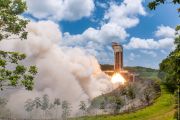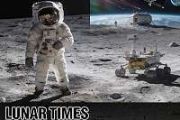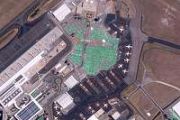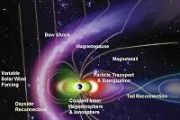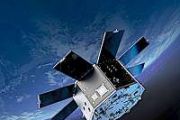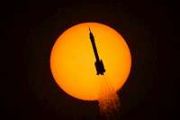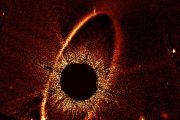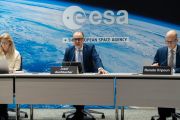
Copernical Team
Without more data, a black hole's origins can be "spun" in any direction
 Clues to a black hole's origins can be found in the way it spins. This is especially true for binaries, in which two black holes circle close together before merging. The spin and tilt of the respective black holes just before they merge can reveal whether the invisible giants arose from a quiet galactic disk or a more dynamic cluster of stars.
Astronomers are hoping to tease out which of
Clues to a black hole's origins can be found in the way it spins. This is especially true for binaries, in which two black holes circle close together before merging. The spin and tilt of the respective black holes just before they merge can reveal whether the invisible giants arose from a quiet galactic disk or a more dynamic cluster of stars.
Astronomers are hoping to tease out which of NASA Orion capsule safely blazes back from moon, aces test
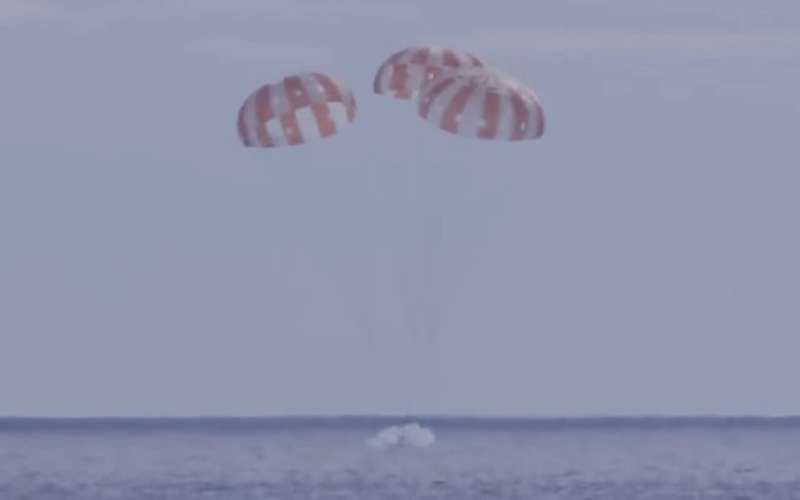
NASA's Orion capsule made a blisteringly fast return from the moon Sunday, parachuting into the Pacific off Mexico to conclude a test flight that should clear the way for astronauts on the next lunar flyby.
MTG-I1 launch sequence in tune
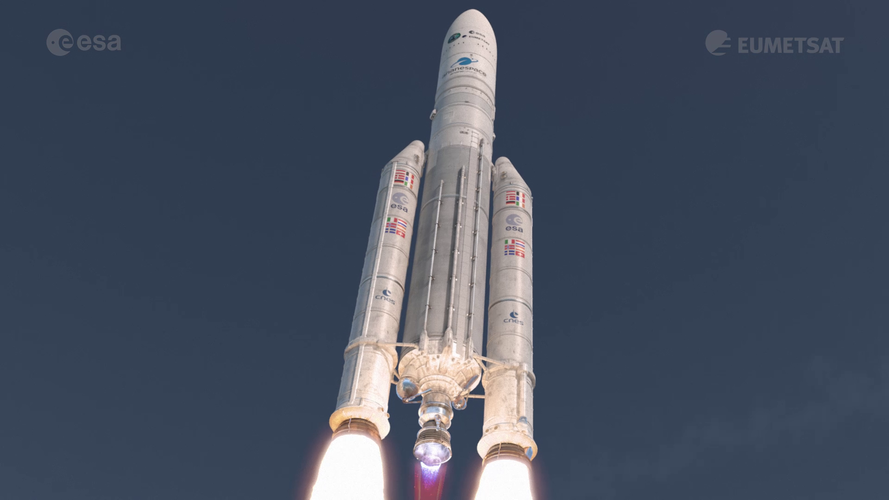 Video:
00:02:43
Video:
00:02:43
The animation shows the full launch sequence for the first Meteosat Third Generation Imager (MTG-I1) satellite. MTG-I1 launches on an Ariane 5 rocket from Europe’s Spaceport in Kourou, French Guiana.
MTG-I1 is the first of six satellites that form the full MTG system, which will provide critical data for weather forecasting over the next 20 years. In full operations, the mission will comprise two MTG-I satellites and one MTG Sounding (MTG-S) satellites working in tandem.
The MTG-I satellites carry two completely new instruments, a Flexible Combined Imager and Europe’s first Lightning Imager, to deliver high-quality data for better weather
ESA Highlights: the best of ESA in 2022
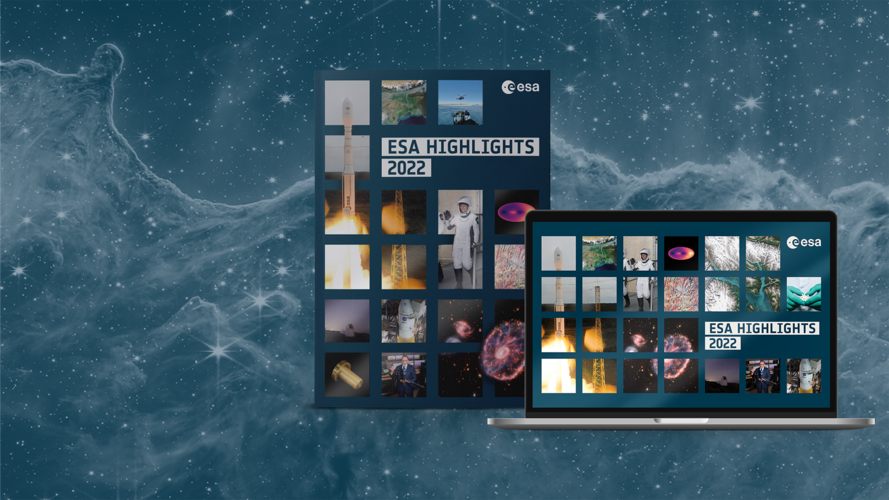
ESA Highlights: the best of ESA in 2022
ESA Highlights 2022 is available online in this interactive format, which can be read on your desktop computer, laptop, tablet or phone.
Watch live launch of Meteosat Third Generation Imager-1
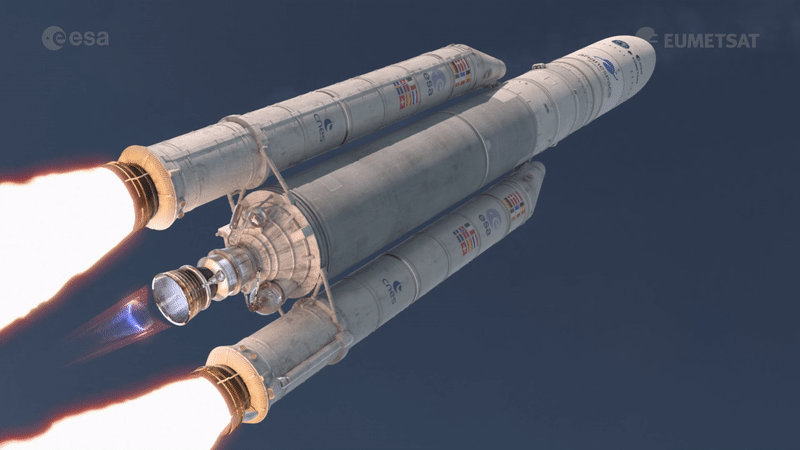
On 13 December, the first of a new generation of satellites designed to revolutionise weather forecasting in Europe will take to the skies. ESA and the European Organisation for the Exploitation of Meteorological Satellites (Eumetsat) invite you to follow the live coverage for the launch of the first Meteosat Third Generation satellite starting from 19:40 CET on ESA Web TV.
China's new space station opens for business in an increasingly competitive era of space activity
 The International Space Station is no longer the only place where humans can live in orbit.
On Nov. 29, 2022, the Shenzhou 15 mission launched from China's Gobi Desert carrying three taikonauts - the Chinese word for astronauts. Six hours later, they reached their destination, China's recently completed space station, called Tiangong, which means "heavenly palace" in Mandarin. The three ta
The International Space Station is no longer the only place where humans can live in orbit.
On Nov. 29, 2022, the Shenzhou 15 mission launched from China's Gobi Desert carrying three taikonauts - the Chinese word for astronauts. Six hours later, they reached their destination, China's recently completed space station, called Tiangong, which means "heavenly palace" in Mandarin. The three ta Orbital Assembly announces hosted payload services with variable gravity on Pioneer Space Station
 Orbital Assembly (OA) is announcing a new program and mission design as well as planning services for station-class hosted payloads" on the company's micro and artificial gravity space stations.
"The International Space Station has a multi-year backlog of companies and institutions seeking to conduct paid research projects in space and the demand is increasing," says Rhonda Stevenson, CEO
Orbital Assembly (OA) is announcing a new program and mission design as well as planning services for station-class hosted payloads" on the company's micro and artificial gravity space stations.
"The International Space Station has a multi-year backlog of companies and institutions seeking to conduct paid research projects in space and the demand is increasing," says Rhonda Stevenson, CEO New nanosatellite tests autonomy in space
 In May 2022, a SpaceX Falcon 9 rocket launched the Transporter-5 mission into orbit. The mission contained a collection of micro and nanosatellites from both industry and government, including one from MIT Lincoln Laboratory called the Agile MicroSat (AMS).
AMS's primary mission is to test automated maneuvering capabilities in the tumultuous very low-Earth orbit (VLEO) environment, startin
In May 2022, a SpaceX Falcon 9 rocket launched the Transporter-5 mission into orbit. The mission contained a collection of micro and nanosatellites from both industry and government, including one from MIT Lincoln Laboratory called the Agile MicroSat (AMS).
AMS's primary mission is to test automated maneuvering capabilities in the tumultuous very low-Earth orbit (VLEO) environment, startin Sidus Space selects Exolaunch for LizzieSat Deployment
 Sidus Space, Inc. (NASDAQ:SIDU), a Space-as-a-Service company focused on mission critical hardware manufacturing combined with commercial satellite design, manufacture, launch, and data collection, recently signed an agreement with Exolaunch to use their CarboNIX separation system to deploy LizzieSatTM satellites during the LizzieSat rideshare missions with SpaceX in 2023 and 2024. This agreemen
Sidus Space, Inc. (NASDAQ:SIDU), a Space-as-a-Service company focused on mission critical hardware manufacturing combined with commercial satellite design, manufacture, launch, and data collection, recently signed an agreement with Exolaunch to use their CarboNIX separation system to deploy LizzieSatTM satellites during the LizzieSat rideshare missions with SpaceX in 2023 and 2024. This agreemen Astronomers report most distant known galaxies, detected and confirmed by JWST
 An international team of astronomers has discovered the earliest and most distant galaxies confirmed to date using data from the James Webb Space Telescope (JWST). The telescope captured light emitted by these galaxies more than 13.4 billion years ago, which means the galaxies date back to less than 400 million years after the Big Bang, when the universe was only 2% of its current age.
Ini
An international team of astronomers has discovered the earliest and most distant galaxies confirmed to date using data from the James Webb Space Telescope (JWST). The telescope captured light emitted by these galaxies more than 13.4 billion years ago, which means the galaxies date back to less than 400 million years after the Big Bang, when the universe was only 2% of its current age.
Ini 














